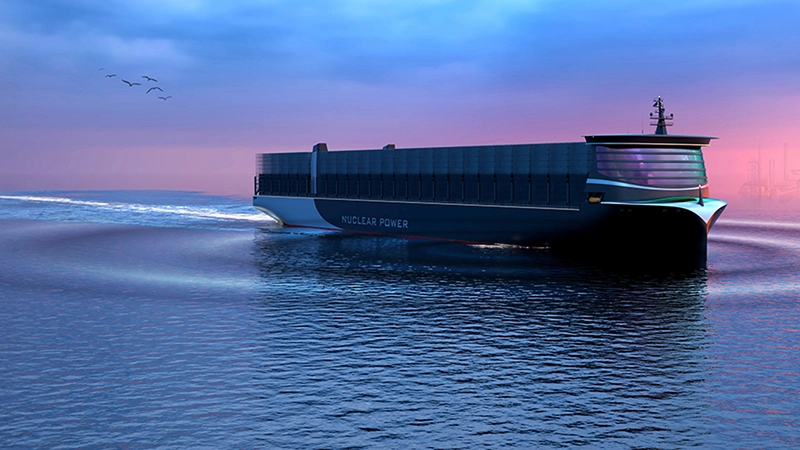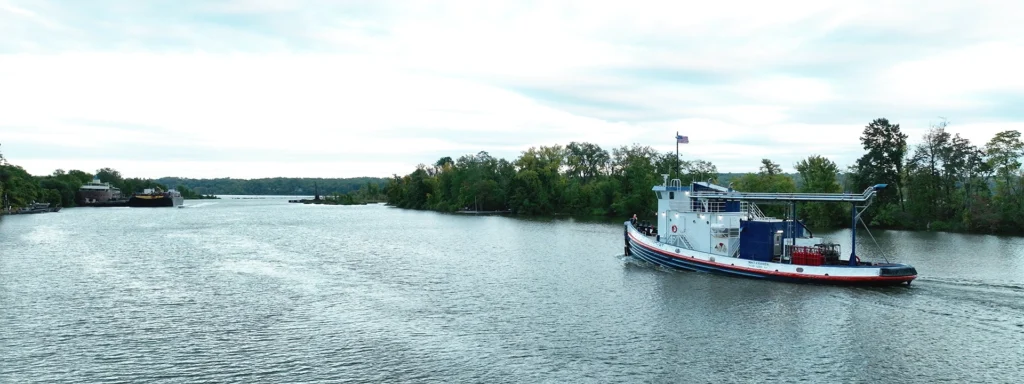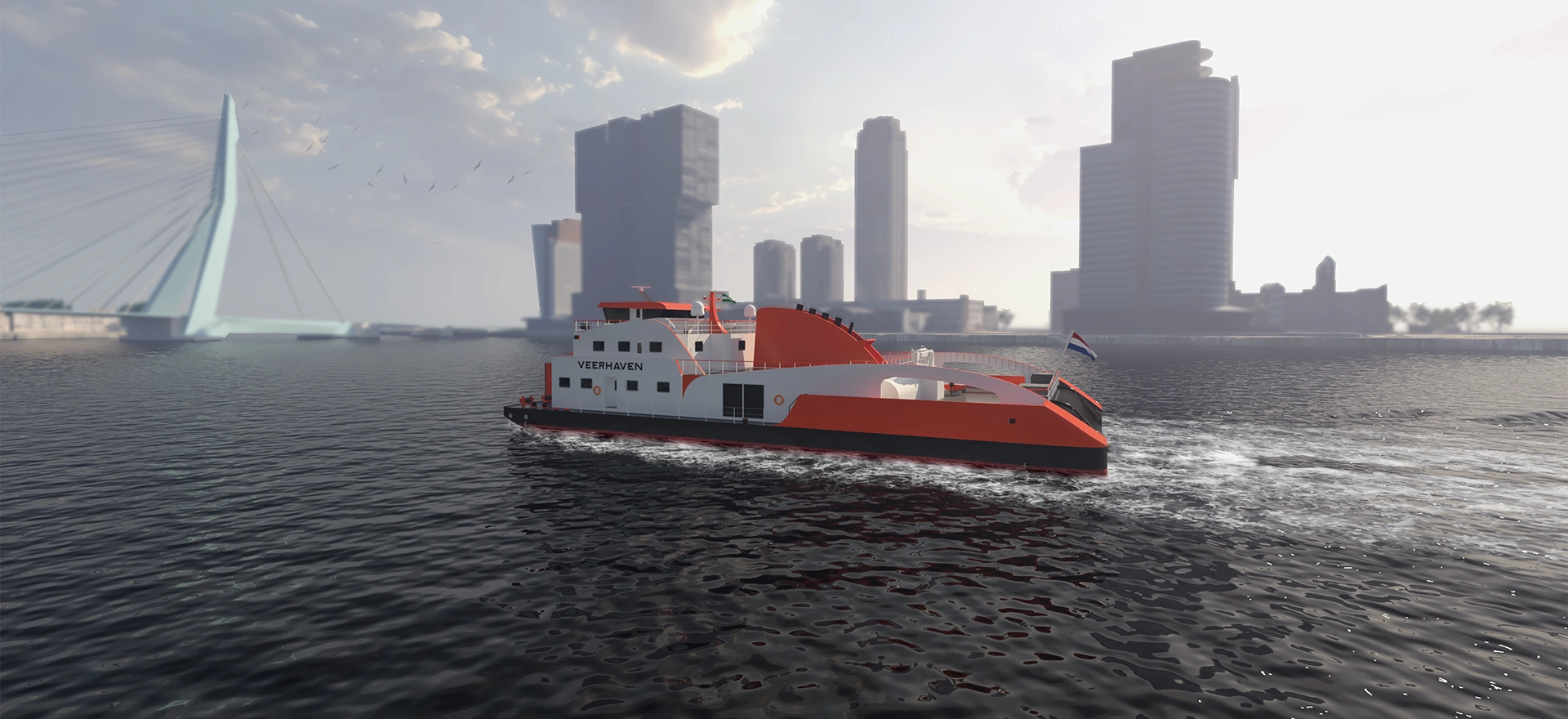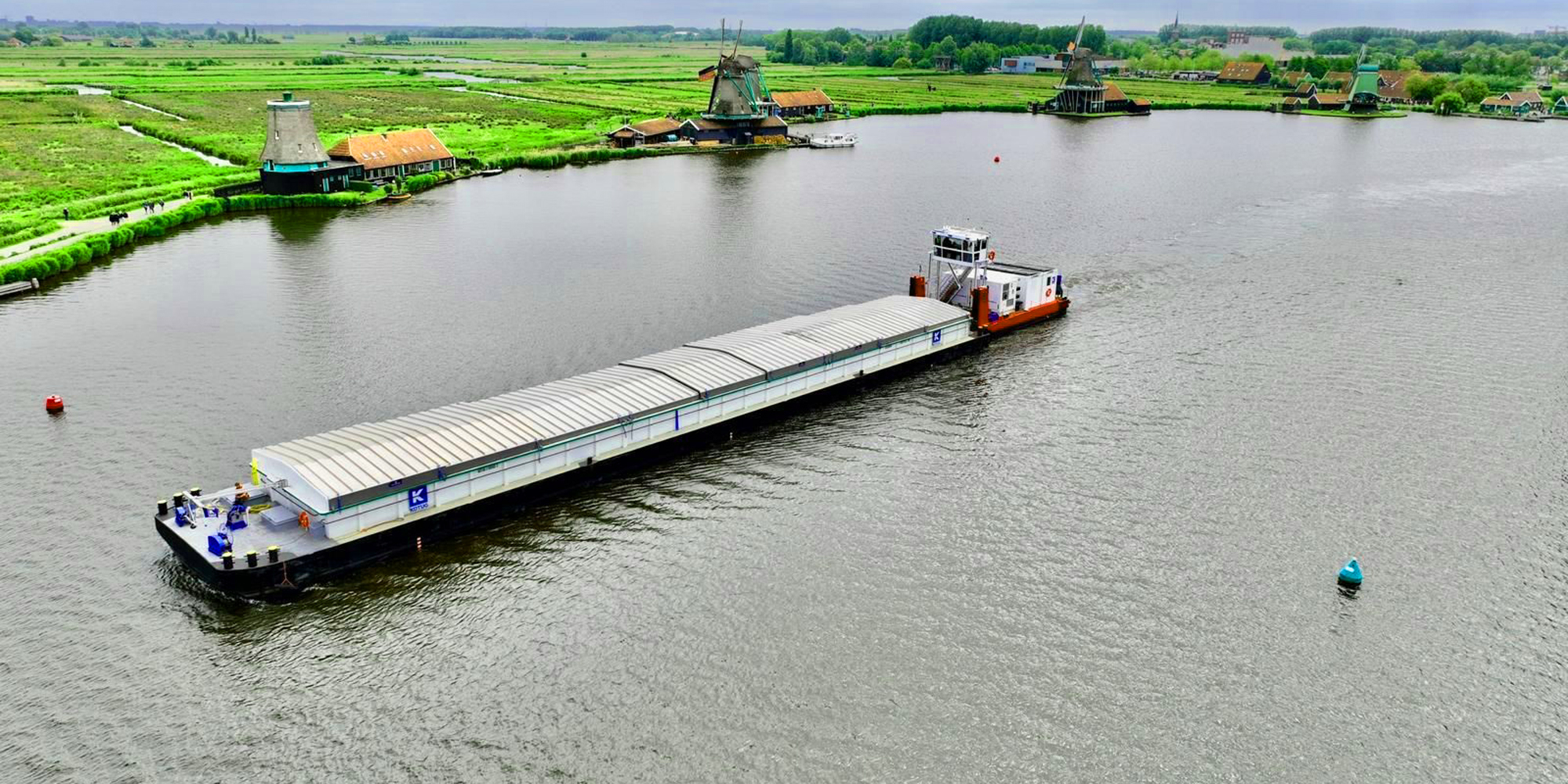
The potential role of nuclear power in maritime decarbonization
Nuclear technology has seen several interesting developments in recent years and should not be dismissed as a possible energy source for future maritime applications. Our research shows that the use of nuclear energy on large ocean-going vessels could result in a 98% reduction in CO2 equivalent emissions, compared to conventional fuel-based systems.
We identified large ocean-going vessels as having the most potential for making use of nuclear propulsion by studying four different concepts (bulk, container, tanker, and offshore). Key items were analyzed, including the mass and volume of the energy storage and power generation system. Our work showed that even though the shield around a nuclear power reactor has high mass and volume, in most cases, the nuclear option of small modular reactors (SMRs) is lighter and more compact than the conventional marine diesel option.
In terms of the type of nuclear power generation, C-Job research concluded that the (Very) High Temperature Gas Reactor ((V)HTGR has the most potential for the first commercial vessels using nuclear power, while a Molten Salt Reactor (MSR) has the most potential in the long term. The combination of passive safety, high burn-up, and the future potential to use the thorium cycle make it the best fit for maritime applications. With thorium, the amount of high-level nuclear waste is less and the longevity is reduced from more than 10,000 years to approximately 300 years.
While nuclear marine propulsion has a high capital expenditure, our research shows it could be cost-effective within fifteen years, depending on fuel cost and the vessel’s operational profile. Nuclear marine propulsion also offers the potential to consider higher design speeds, making the ship more profitable. This is due to the fuel cost (OPEX) only growing marginally with higher speeds.
The outcome of C-Job’s research could benefit all stakeholders in the shipping industry, from companies and investors to port authorities and regulatory bodies.
Nuclear-powered commercial vessel
Project highlights
Viability research
Early research into the potential use of nuclear energy on vessels
Risk-based approach
Analyzing the challenges of using nuclear energy as a fuel onboard a vessel
Reduction of emissions
Redefining the vessel design required for nuclear power to reduce emissions
Nuclear-powered commercial vessel
C-Job specialist testimonial
Nuclear-powered commercial vessel
Scope of work

Design and engineering for new-build vessels

Decarbonization, energy efficiency and compliance
Nuclear-powered commercial vessel
Related case studies

NH₃ Kraken – for Amogy

New generation push boats – design for thyssenkrupp Veerhaven
